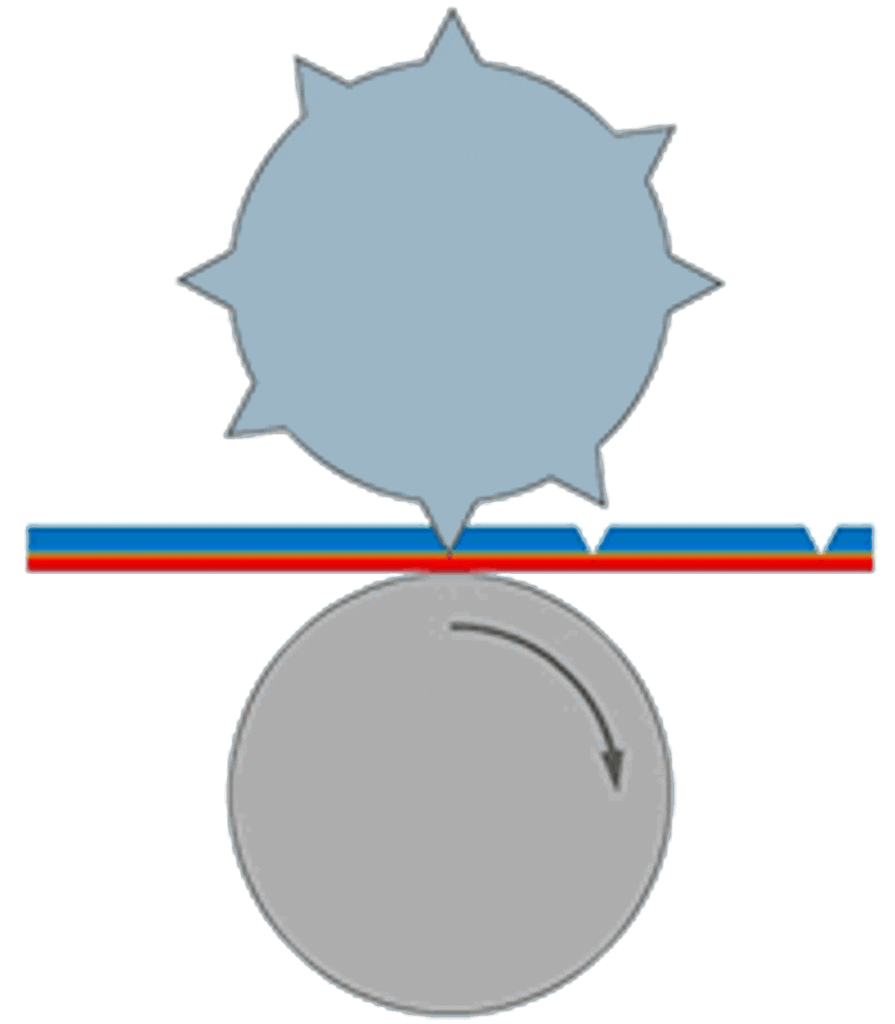At Knowell Corporation, we are capable of slitting and rewinding materials to a variety of core sizes at custom widths and lengths.
Die cutting is a mass fabrication process for cutting out shapes by shearing stock materials such as paper and chipboard using a die, which is a specially crafted tool used for cutting or shaping a material. The die has sharp edges to pierce the material; and has the two-dimensional shape of the finished part.



Rotary die cutting is a special kind of die cutting that uses a cylindrical die to cut shapes out of material. It moves around and around in a circular motion and has blades to cut out the desired shape around the entirety of the cylinder. The die cutting process is incredibly efficient because it cuts out many identical shapes as it rotates.

Flatbed Die-Cutting is the process of cutting or perforating the desired shape out of material using a hydraulic flatbed press. It’s suitable for low-volume projects, yet inefficient for high-volume ones, whereas rotary die cutting machines can often perform many more cuts.

Match-metal dies are also known as “punch and die” or “by-pass” dies. These dies are used when one or more of the following are required; material is difficult to cut with a sharp edge die, tight tolerance, or you are faced with large production runs.

Compound dies produce a complete blank in one station at every stroke of the press. Basically, these dies perform one or more operations at the same time. For instance, they can blank (cut the outer form) and pierce (cut the inner form) of a shape simultaneously.

A punch press is a type of machine press used to cut holes in material. It can be small and manually operated and hold one simple die set, or be very large, CNC operated, with a multi-station turret and hold a much larger and complex die set.

Multi-layer laminating is the technique/process of combining multiple material layers to achieve additional properties unavailable in differing materials. Many converted components require the lamination of two or more materials.

Zoned adhesive lamination describes a die-cut part with only partial adhesive coverage of a selected pattern.

Kiss cutting is a common technique used in manufacturing to make products like stickers, felt pads and hanging hooks. This process leaves your finished part cut, but on a removable layer of paper or foil. Your finished part stays on this layer until it’s peeled off and used.

Pull-tabs, extended liners and split liners are assembly aids. They make the process of removing the liner from a die-cut adhesive part much easier. When you work with Marian, we keep your manufacturing and assembly process in mind as we develop the solution

Perforation die cutting is a type of die cutting technique where the part or component isn’t completely separated from the sheet. Rather, it is held intact by multiple perforations, or small holes, until it can be detached.